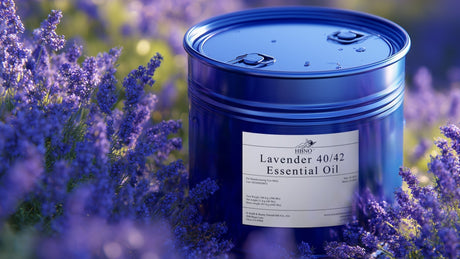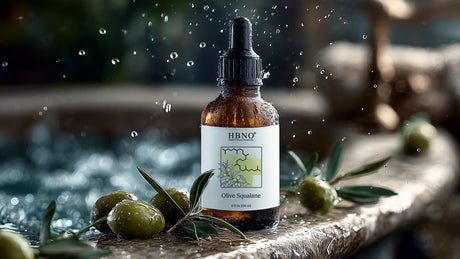Lavender essential oil, renowned for its calming aroma and therapeutic benefits, has become a staple in many households. However, for cat owners, it's crucial to understand the potential risks associated with using lavender oil around feline companions. This comprehensive guide delves into the safety concerns, potential hazards, and essential precautions every cat owner should be aware of when considering the use of lavender essential oil.
Understanding Lavender Essential Oil
Lavender essential oil is derived from the flowers of the Lavandula angustifolia plant through steam distillation. Praised for its versatile applications, it is commonly used in aromatherapy, personal care products, and household cleaning agents. The oil contains active compounds such as linalool and linalyl acetate, which contribute to its characteristic scent and therapeutic properties.
The Appeal of Organic and Pure Lavender Essential Oil
Many consumers opt for organic and pure lavender essential oil, believing it to be free from pesticides and synthetic additives. While these qualities are beneficial for human use, it's essential to recognize that the purity or organic status of an essential oil does not necessarily equate to safety for pets, particularly cats.
What Makes an Essential Oil Organic?
Organic essential oils are derived from plants grown without synthetic pesticides, herbicides, or chemical fertilizers. The distillation process ensures that the oil retains its natural properties without contamination from artificial substances. While this ensures a high-quality product for human use, it does not alter the chemical makeup of the oil that may be harmful to cats.

Why Lavender Essential Oil Can Be Harmful to Cats
Cats possess a unique liver metabolism that lacks certain enzymes necessary to process specific compounds found in essential oils. In the case of lavender oil, the presence of linalool and linalyl acetate poses a significant risk. When cats are exposed to these substances, either through inhalation, ingestion, or skin contact, they can experience toxic effects.
How Essential Oils Affect Cats Differently Than Humans
Unlike humans and even dogs, cats have a liver enzyme deficiency (glucuronosyltransferase), which means they cannot metabolize certain chemicals efficiently. This makes them more susceptible to toxicity from essential oils, including lavender. Even in small doses, repeated exposure can lead to toxic buildup in their system.
Potential Symptoms of Lavender Oil Toxicity in Cats
If a cat is exposed to lavender essential oil, it may exhibit a range of symptoms indicative of toxicity. These can include:
-
Gastrointestinal Issues: Vomiting and diarrhea.
-
Neurological Signs: Tremors, seizures, or unsteady gait.
-
Respiratory Problems: Difficulty breathing or rapid breathing.
-
Behavioral Changes: Lethargy, weakness, or unusual behavior.
-
Drooling: Excessive salivation.
-
Skin Irritation: Redness, itching, or swelling upon direct contact.
It's important to note that symptoms may not appear immediately and can develop over time. If any of these signs are observed, it's imperative to seek veterinary care promptly.
Common Sources of Lavender Exposure
Cats can come into contact with lavender essential oil through various means:
-
Diffusers and Air Fresheners: The use of essential oil diffusers can release particles into the air, which cats may inhale or ingest during grooming.
-
Topical Applications: Applying products containing lavender oil to a cat's skin or fur can lead to absorption and potential toxicity.
-
Ingestion: Cats may accidentally ingest lavender oil by licking surfaces, their fur, or by accessing improperly stored products.
-
Household Products: Some natural cleaning products contain lavender oil, increasing the risk of exposure.
-
Lavender Plants: Fresh lavender plants may also pose a mild risk if ingested by a curious cat.
The Debate on Diffusing Lavender Oil Around Cats
While some believe that diffusing lavender oil in a well-ventilated area poses minimal risk, it's essential to exercise caution. Cats have a highly sensitive sense of smell and may find strong scents overwhelming. Moreover, oil particles dispersed in the air can settle on a cat's fur, leading to ingestion during grooming. To minimize risks, ensure that diffusers are placed in areas inaccessible to cats and monitor them for any signs of distress.
Safe Ways to Use Lavender Essential Oil in a Cat Household
If you wish to use lavender essential oil while ensuring your cat's safety, consider these precautions:
-
Use Passive Diffusion: Instead of ultrasonic diffusers, use passive diffusion methods, like placing a few drops on a cotton ball kept in a safe, enclosed space.
-
Keep Cats Out of Diffuser Areas: Ensure your cat has access to fresh air and a separate, essential-oil-free room.
-
Use Only Certified Organic Lavender Oil: While this does not eliminate toxicity risks, organic oils reduce exposure to additional synthetic chemicals.
-
Limit Exposure Duration: Do not diffuse lavender oil continuously or for long periods.
-
Avoid Direct Contact: Never apply lavender oil directly onto your cat's fur or bedding.
-
Monitor Your Cat's Behavior: If your cat shows any signs of distress, discontinue use immediately.

What to Do If Your Cat Is Exposed to Lavender Oil
If you suspect your cat has been exposed to lavender essential oil, take the following steps:
-
Remove the Source: Immediately eliminate access to the oil.
-
Provide Fresh Air: Ventilate the space and allow your cat to breathe fresh air.
-
Clean Fur and Skin: If the oil has come into contact with their fur, wash the affected area with mild soap and water.
-
Seek Veterinary Attention: Contact your veterinarian immediately, even if symptoms are not yet apparent.
-
Observe for 24-48 Hours: Symptoms may develop gradually, so continuous monitoring is crucial.
Exploring Cat-Friendly Alternatives
If you're seeking aromatic options that are safer for cats, consider the following:
-
Catnip: A favorite among many felines, catnip can provide a pleasant scent and stimulate playful behavior.
-
Valerian Root: Known to have a calming effect on cats, valerian can be a suitable alternative.
-
Chamomile: When used cautiously, chamomile can offer a mild, soothing aroma.
-
Silver Vine: A natural stimulant that is safe and enjoyable for cats.
Conclusion
While lavender essential oil offers numerous benefits for humans, it's essential to recognize the potential dangers it poses to cats. Prioritizing your feline friend's health by staying informed and exercising caution can ensure a harmonious environment for both you and your pet.
Choose a Private Label Formulation Experts providing end-to-end solutions for private label businesses.
References
- Pet Poison Helpline. "Essential Oils and Cats."
- PetMD. "Are Essential Oils Safe for Cats?"
- Nikura. "Is Lavender Oil Safe for Cats?"
Note: This article is intended for informational purposes only and should not replace professional veterinary advice.



